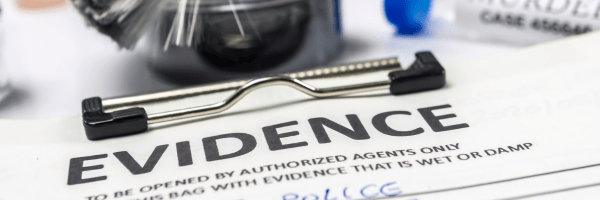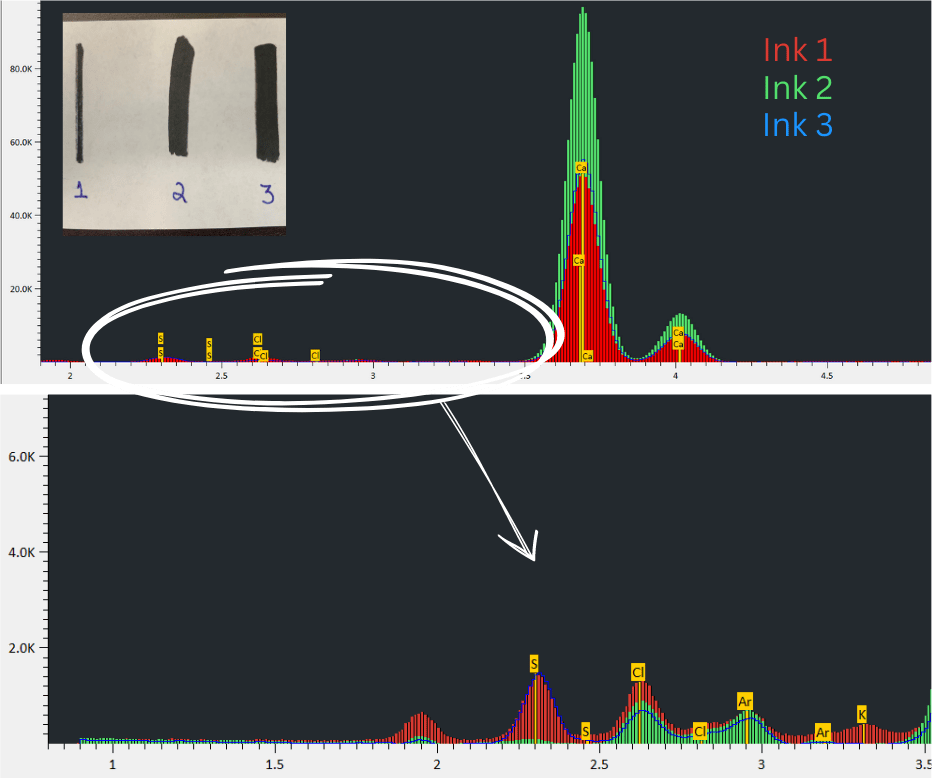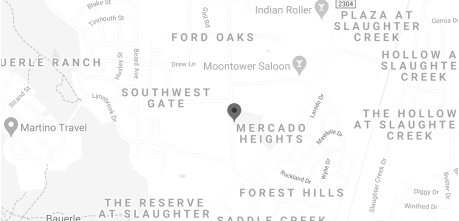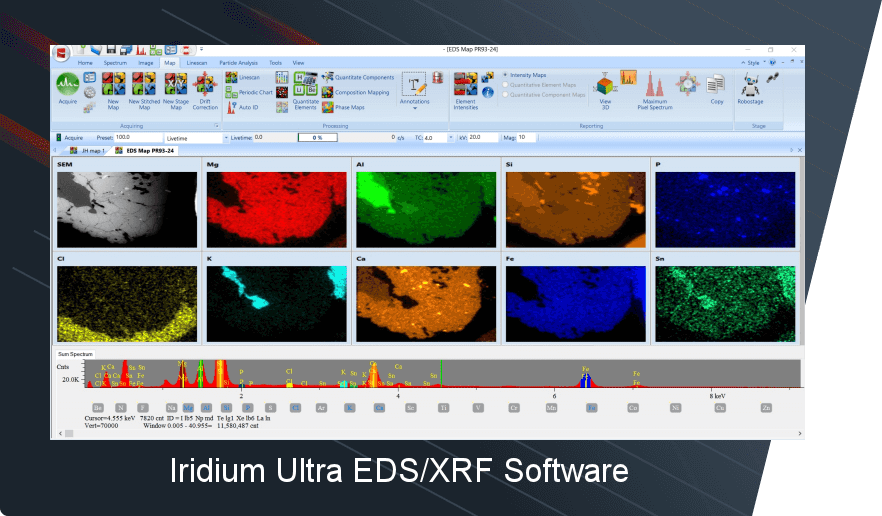In the pursuit of justice, forensic analysis emerges as an indispensable tool. Combining science and technology, this multidisciplinary approach uncovers crucial evidence that underpins the justice system. Among the array of cutting-edge technologies, micro X-ray fluorescence (µXRF) is gaining recognition as a transformative tool in forensic investigations. This non-invasive technique is celebrated for its versatility, capable of analyzing everything from minute trace elements on fabrics to intricate inorganic materials. In this article, we delve into the capabilities of µXRF, its forensic applications, and the pivotal role of spatial resolution.
What is Micro X-Ray Fluorescence (µXRF)?
Micro X-ray fluorescence (µXRF) is a specialized form of traditional X-ray fluorescence (XRF). By exposing a sample to focused X-rays, µXRF induces the emission of secondary, or fluorescent, X-rays. These emissions reveal the elemental composition of the sample with exceptional accuracy.
What sets µXRF apart is the “micro” aspect—focused X-ray beams with micrometer-level precision. The Atlas series from IXRF Systems, for instance, achieves spatial resolutions as fine as 5μm pixel size, enabling unparalleled detail and accuracy in forensic investigations.
Why Spatial Resolution Matters in µXRF
The cornerstone of µXRF’s efficacy lies in its spatial resolution, which determines the smallest physical area the X-ray beam can analyze. High spatial resolution delivers critical advantages:
- Detection of Minute Particles
Forensic samples often contain tiny particles like gunshot residues, hair, or paint traces. µXRF’s precise spatial resolution enables meticulous analysis of these critical samples. - Unmatched Precision
High-resolution mapping ensures accurate results, especially for heterogeneous samples where elemental composition varies across regions. - Sample Preservation
µXRF’s non-destructive analysis protects delicate evidence, preserving it for additional investigations—a vital attribute in forensic science.
Top Forensic Applications of µXRF
1. Gunshot Residue Analysis
µXRF can detect and analyze elements like lead, barium, and antimony in gunshot residue on clothing or skin, helping establish an individual’s proximity to a firearm discharge.
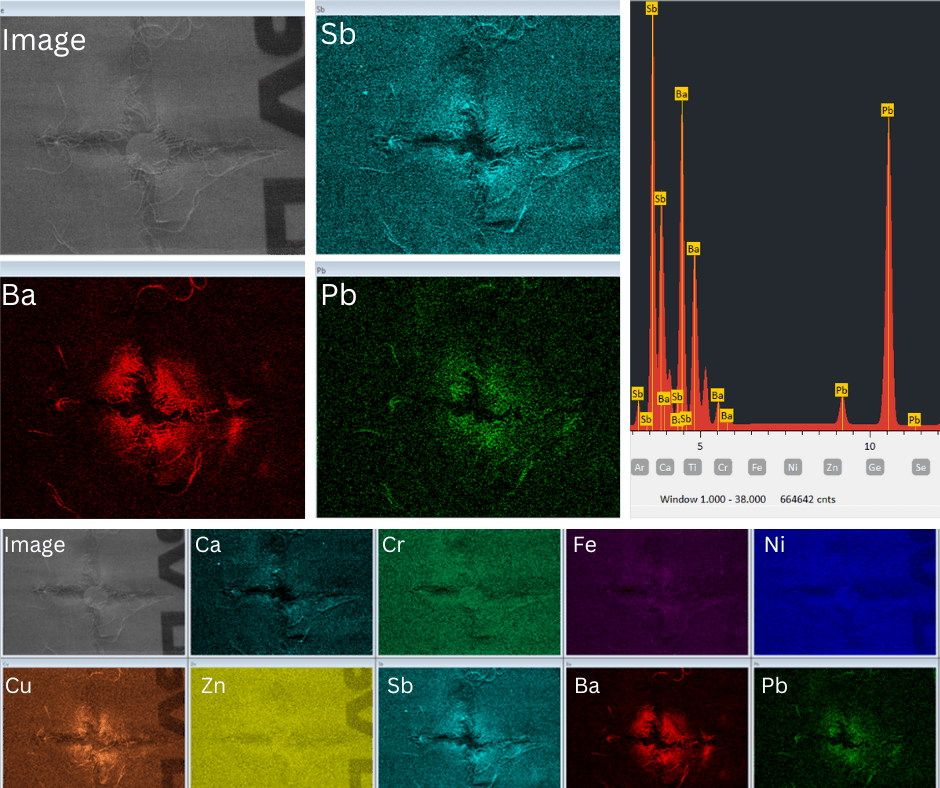
Figure 1: Elemental intensity maps of Gun Shot Residue on fabric analyzed by IXRF System’s Atlas µXRF.
2. Document and Currency Examination
µXRF is invaluable for detecting forgeries, alterations, and counterfeit materials. Its precision allows for non-destructive ink and paper analysis.
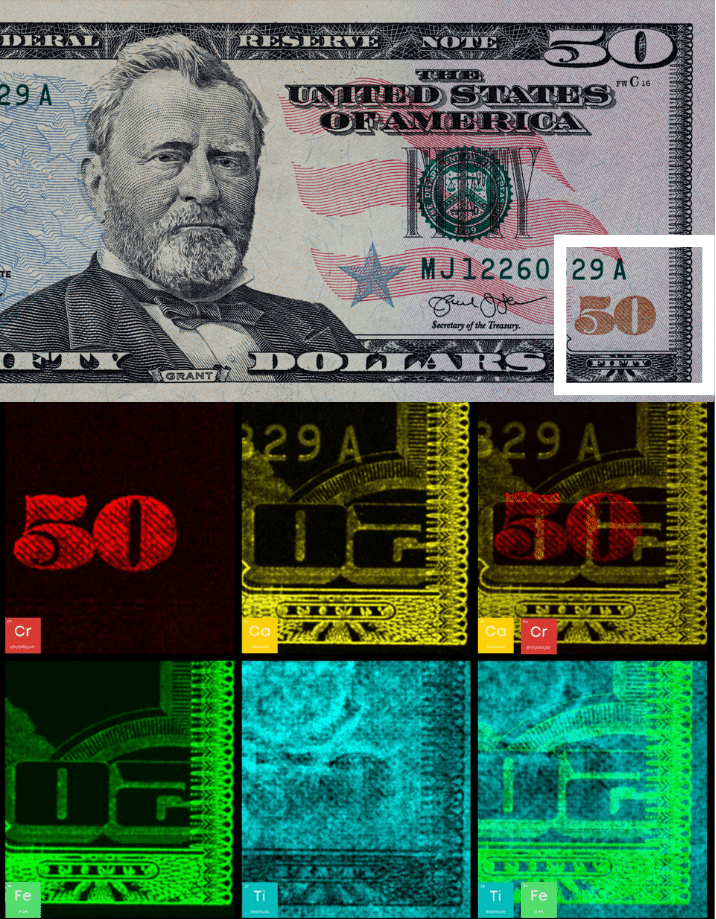
Figure 2: A $50 dollar bill and 2D microXRF elemental maps were taken from the corner of the bill. Data collection parameters: 4096 x 4074 resolution, 7 μm pixel size, 26.80 x 26.6 mm.
Figure 3: An XRF Spectrum overlay comparing three black wet-erase markers. (1) Black wet erase fine point marker, Expo Vis-avis, is seen as the red spectrum, (2) Black whiteboard marker, Gxin G-206D, refillable is the green overlay; and (3) Black wet erase marker, Swiftcalendars.com, is the blue overlay. They can easily be differentiated from each other via elements present/lacking and/or ratios of present elements. Ink 1 has K, while Ink 2 and Ink 3 do not. Ink 3 has S, while Ink 2 does not.
3. Paint Sample Analysis
In cases like hit-and-runs, µXRF can identify the elemental composition of paint, tracing it to specific sources or vehicles.
4. Glass Fragment Investigation
Residual glass from break-ins or accidents can be analyzed for composition and source identification, offering critical leads.
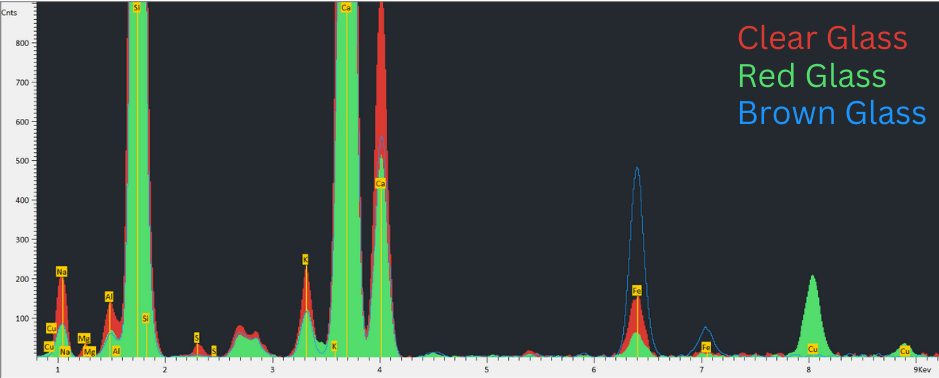
Figure 4: A Spectrum overlay comparing three different glass fragments.
5. Soil and Geological Sample Analysis
When event locations are disputed, µXRF can analyze soil or rock samples to provide definitive answers.

Figure 5: XRF spectrum of a soil sample – NIST Standard Reference Material 2711a Montana II Soil with moderately elevated trace element concentrations. This soil was collected from the top 10 cm to 12 cm of an agricultural field located near a site formerly used by a smelting plant in East Helena, Montana.
6. Art Authentication and Provenance Analysis
µXRF extends beyond forensics into art validation, analyzing pigments and materials to verify authenticity or expose fraud.
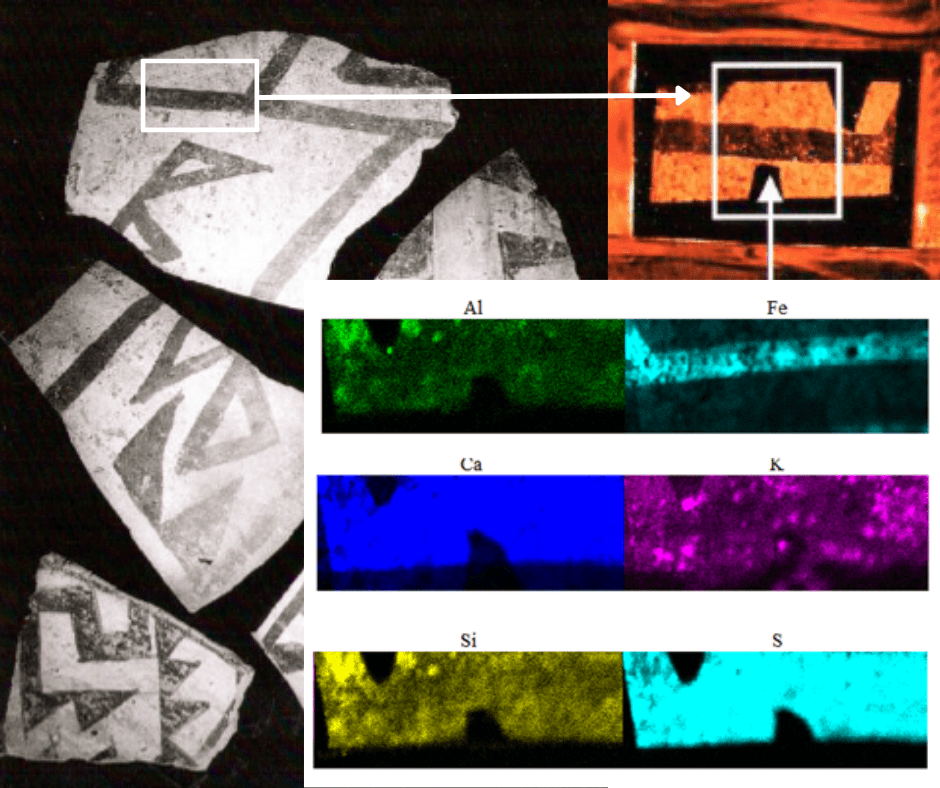
Figure 6: Ancestral Puebloan black-on-white painted pottery from the American Southwest. The pottery samples were analyzed utilizing the Atlas M micro-x-ray fluorescence at 50 keV. The samples were mapped to identify the location of elements.
The Future of µXRF in Forensic Science
The future of µXRF is bright, with advancements in instrumentation and computational analytics paving the way for enhanced capabilities. Collaboration between manufacturers, forensic experts, and data scientists is key to unlocking µXRF’s full potential. Emerging possibilities include:
- Comprehensive Material Databases: Profiling inks, dyes, drugs, and other materials to streamline investigations.
- Forensic Anthropology: Tracing the origins and history of skeletal remains with high-resolution elemental mapping.
Conclusion: Revolutionizing Forensic Investigations
Micro X-ray fluorescence has become a vital tool in forensic science, offering non-invasive, precise, and detailed analysis of critical samples. As the technology evolves, its applications in justice will only grow, empowering forensic experts to uncover the truth with greater accuracy.
Every trace tells a story. With µXRF, the forensic community is poised to uncover even the most hidden evidence, shaping a future where justice thrives on scientific precision.
Learn More About Forensic Analysis with µXRF
IXRF Systems is a leader in X-ray fluorescence technology, offering innovative solutions for forensic, research, and industrial applications. Explore our Atlas series µXRF and discover how it can elevate your investigative capabilities.
IXRF Systems is a leading provider of X-ray fluorescence instrumentation. With our advanced analytical solutions, we are committed to supporting research, quality control, and educational endeavors across various industries.
